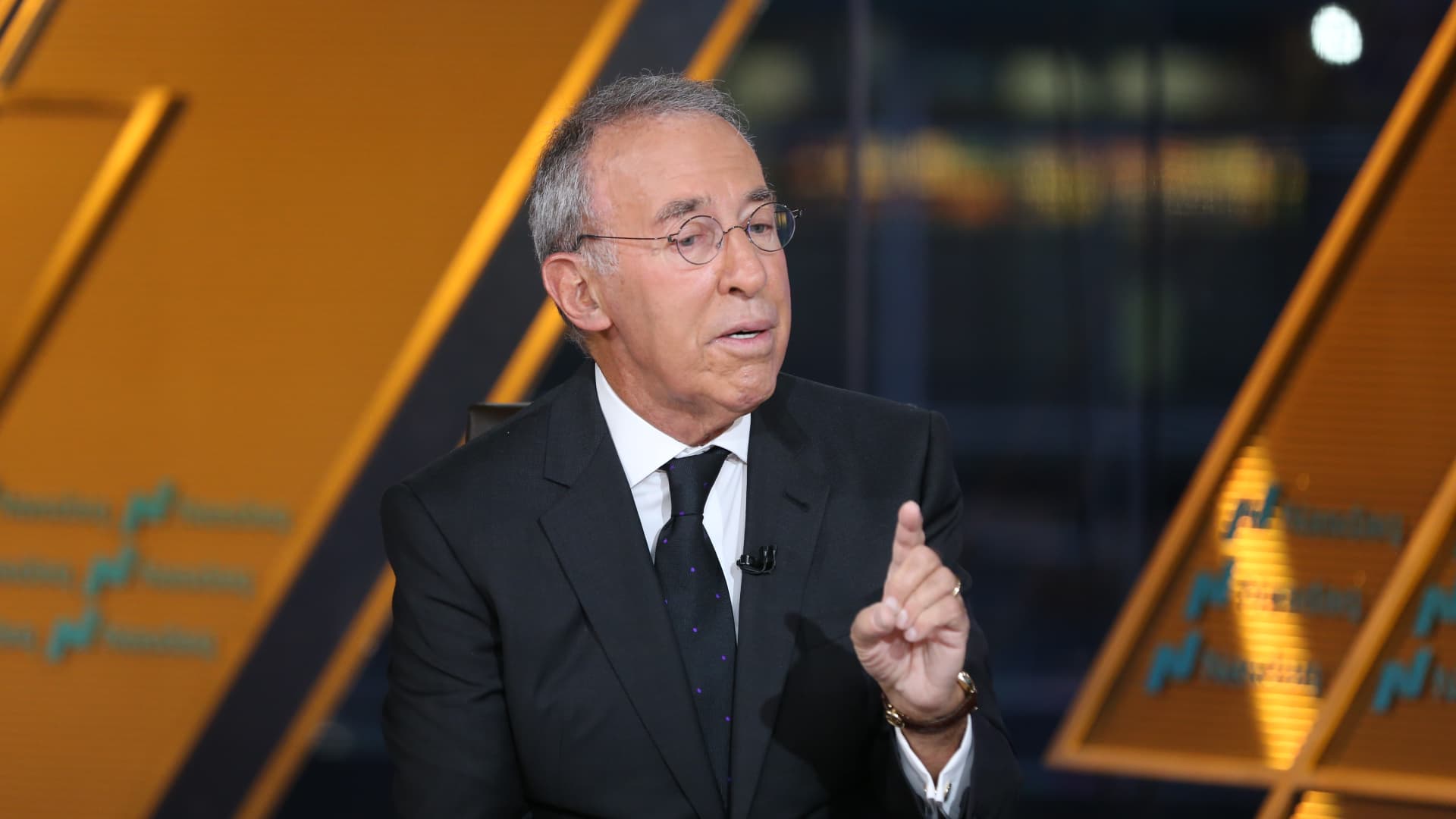As the dollar falters, the world’s central banks tread a tightrope — devalue their currency or not

U.S. one hundred dollar bills.
Nurphoto | Nurphoto | Getty Images
The dollar has been sliding and the ripple effect on other currencies has brought a mix of relief and headache to central banks around the world.
Uncertainty about U.S. policymaking has led to a flight out of the U.S. dollar and Treasurys in recent weeks, with the dollar index weakening more than 9% so far this year. Market watchers see further declines.
According to Bank of America’s most recent Global Fund Manager Survey, a net 61% of participants anticipate a decline in the dollar’s value over the next 12 months — the most pessimistic outlook of major investors in almost 20 years.
The exodus from U.S. assets may reflect a broader crisis of confidence, with potential spillovers such as higher imported inflation as the dollar weakens.
Most central banks would be happy to see 10%-20% declines in the U.S. dollar.
Adam Button
ForexLive chief currency analyst
The drop in the greenback has led other currencies to appreciate against it, especially safe havens such as the Japanese yen, the Swiss franc as well as the euro.
Since the start of the year, the Japanese yen has strengthened over 10% against the greenback, while the Swiss franc and the euro has appreciated about 11%, according to LSEG data.
Aside from the safe havens, other currencies that have strengthened against the dollar this year include the Mexican peso, up 5.5% against the dollar, and the Canadian dollar which has appreciated over 4%. The Polish zloty has strengthened more than 9% while and Russian rouble has appreciated over 22% against the greenback.
Some emerging market currencies, however, have depreciated despite the weakness in the greenback.
The Vietnamese dong and Indonesian rupiah weakened to a record low per U.S. dollar earlier this month. The Turkish lira also hit an all-time low last week. China’s yuan hit a record low against the dollar nearly two weeks back but has since strengthened.
Breathing room to cut rates?
Barring a few exceptions like the Swiss National Bank, a weakening U.S. dollar is a relief to governments and central banks around the world, analysts told CNBC.
“Most central banks would be happy to see 10%-20% declines in the U.S. dollar,” said Adam Button, chief currency analyst at ForexLive. He added that the dollar strength has been a persistent problem for years and poses a difficulty for countries with hard and soft dollar pegs.
With many emerging market countries having large dollar-denominated debt, a weaker dollar lowers real debt burden. Additionally, a softer greenback and stronger local currency tend to make imports relatively cheaper, lowering inflation and hence allowing central banks the room to cut rates to boost growth.
The recent U.S. dollar sell-off offers more “breathing room” for central banks to cut rates, said Button.
The dollar index in the past year
While a stronger local currency might help tame inflation via cheaper imports, it complicates export competitiveness particularly under renewed U.S. tariffs where Asia is exposed as the world’s largest goods producer, said Thomas Rupf, VP Bank’s co-head for Singapore and Asia chief investment officer.
Currency devaluation is likely to be more of an active consideration across emerging markets, particularly in Asia, said Nick Rees, head of macro research at Monex Europe.
However, these emerging markets and Asian central banks will need to tread a fine line, to avoid capital flight and other risks.
“Emerging markets face high inflation, debt, and capital flight risks, making devaluation dangerous,” said Wael Makarem, financial markets strategists lead at Exness.
Additionally, devaluation could be seen by the U.S. administration as a trade measure which could attract retaliation, he added.
Emerging market economies may be reluctant to cut rates as it can affect the debt burden of domestic households and firms that have borrowed in U.S. dollars, said Fitch Solutions’ director of economics, Alex Muscatelli. A weaker domestic currency can also lead to capital outflows in response to lower interest differentials with the U.S., he added.
For example, Muscatelli does not see Indonesia’s central bank cutting rates too much given the recent currency volatility, but cited that Korea and India may have space for cutting rates.
For now, it seems the preferred action is avoiding a currency war that would only add more instability to the local and global economy.
Brendan McKenna
Wells Fargo
The European Central Bank took the opportunity offered by declining inflation to cut rates by another 25 basis point at its April meeting. The ECB on Thursday said that “Most measures of underlying inflation suggest that inflation will settle at around the Governing Council’s 2% medium-term target on a sustained basis.”
Another example is the Swiss National Bank, which has grappled with a strong franc for much of the past 15 years, observed Button. Exports of goods and services make up over 75% of Switzerland’s GDP and a strong franc makes Swiss goods more expensive abroad.
“If capital continues to flow in, they may have to take drastic measures to devalue,” he said. Investors flood into the franc during times of uncertainties, such as in recent weeks, strengthening the franc.
Central banks are avoiding devaluation — for now
Devaluing the currency poses the risk of stoking price growth and monetary authorities will be wary of inflation staying above their targets.
The risk of higher inflation arising from currency depreciation as well as tariffs — as countries respond to U.S. levies — are likely to make central banks reluctant to pursue a path of voluntary devaluation, said Wells Fargo’s international economist and FX strategist, Brendan McKenna.
On top of that, while most foreign central banks do theoretically have the bandwidth to weaken their own currency, the likelihood is still low in the current environment, the strategist added.
Whether a country can devalue its currency is influenced by several factors: the size of its FX reserves, exposure to foreign debt, its trade balance, and sensitivity to imported inflation.
Swiss franc performance in the past year
“Export-oriented countries with sufficient reserves and lower reliance on foreign debt would have more room to devalue – but even those are likely to tread carefully,” said McKenna.
The broader direction of trade negotiations will be key to how countries choose to act. Aside from China, several countries have displayed a willingness to engage in trade negotiations, and if these talks lead to lower tariffs, then central banks will not be as likely to pursue weaker currencies, he added.
In the current geopolitical climate, devaluation could also invite retaliation and risks of accusations of currency manipulation, said VP Bank’s Rupf.
Though there is still the possibility that trade tensions could lead to more protectionist outcomes, which will drive central banks toward devaluing their currencies.
“But for now, it seems the preferred action is avoiding a currency war that would only add more instability to the local and global economy,” McKenna said.











